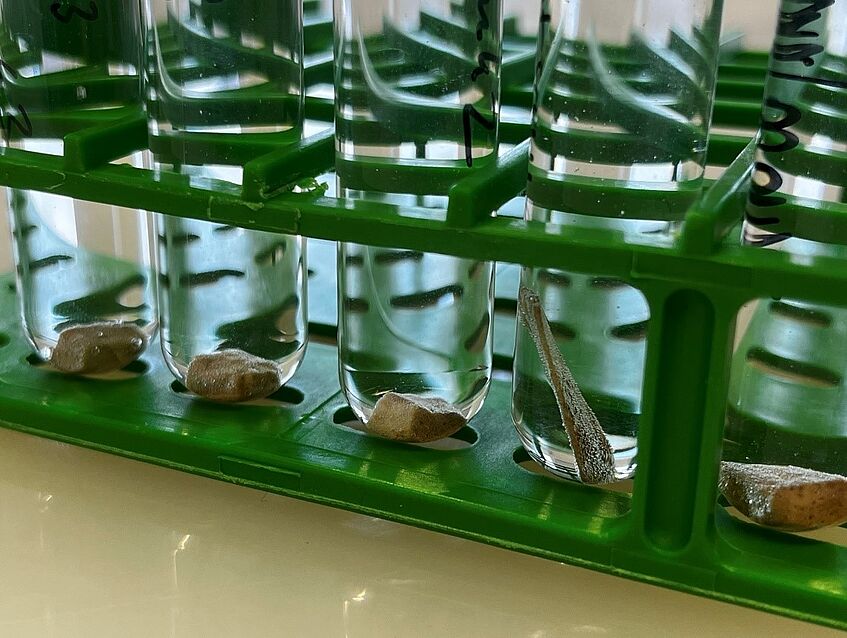Health and diet intertwined:
Co-analysing genetic markers with dietary stable isotopes of subadults from Roman and Early Medieval Croatia
In this project, we combine carbon and nitrogen stable isotope ratio (δ¹³C and δ¹⁵N) analyses of human and animal bones from Roman and Early Medieval sites in present-day Croatia with osteological data and ancient DNA results from the same individuals.
Team: Brina Zagorc and Magdalena Blanz
Funding: HEAS seed grant
Start: January 2023
Diet, health, ancestry and burial
Numerous studies reflect that our dietary choices can affect our health. Similarly, our health can also affect our diet (e.g. being unable to chew due to tooth loss). In this study, the diets of people from Roman and Early Medieval sites in present-day Croatia are reconstructed, focussing on subadults (i.e. children, youths). Most previous research in bioarchaeology has focussed on adults, but a much deeper insight will be gained from understanding how past societies treated their offspring. The dietary reconstructions will be compared to skeletal health markers, age, biological sex, funerary information, and inferred differences between status according to grave goods, with reference to possible familial relations as observed in the ancient DNA.
The Roman Empire during Antiquity is still known as one of the greatest civilisations in our history and examining the subadult populations in the urban areas allows us to shed light on the actual quality of life in bigger settlements. The Early Medieval sites follow this period as a counterpart with turbulent migrations and cultural changes which can also be reflected in the health status of the population.

Bone collagen extraction from ribs; Image: Brina Zagorc
Stable isotope ratio analyses in this project
As part of this project, bone collagen was extracted from human and animal bone samples. The bone collagen was then measured for stable carbon and nitrogen isotope ratios (δ¹³C and δ¹⁵N). Since the δ¹³C and δ¹⁵N values of dietary protein are reflected in the δ¹³C and δ¹⁵N values of bone collagen, this allows for an assessment of past diets, including the extent of meat, fish, and millet consumption. The stable isotope ratio laboratory work for this project were be undertaken at the Bioarchaeology Laboratory for Stable Isotope Analysis of the Vienna Institute for Archaeological Science, and the SILVER laboratory.
Publications
B. Zagorc, M. Blanz, S. Sawyer, P. Gelabert, V. Oberreiter, O. Cheronet, H.S. Chen, M. Carić, E. Viskovic, I. Olalde, M. Ivanova-Bieg, M. Novak, D. Reich, R. Pinhasi, ‘Bioarchaeological Perspectives on Late Antiquity in Dalmatia: Paleogenetic, Dietary, and Population Studies of the Hvar-Radošević burial site’, Archaeological and Anthropological Sciences, 16:150.
This project arose as part of the PhD studies of Brina Zagorc at the University of Vienna, where she is also part of the Pinhasi lab. It is a collaboration between the Department of Evolutionary Anthropology and the Vienna Institute for Archaeological Science (both University of Vienna) as part of the Human Evolution and Archaeological Sciences research network.
